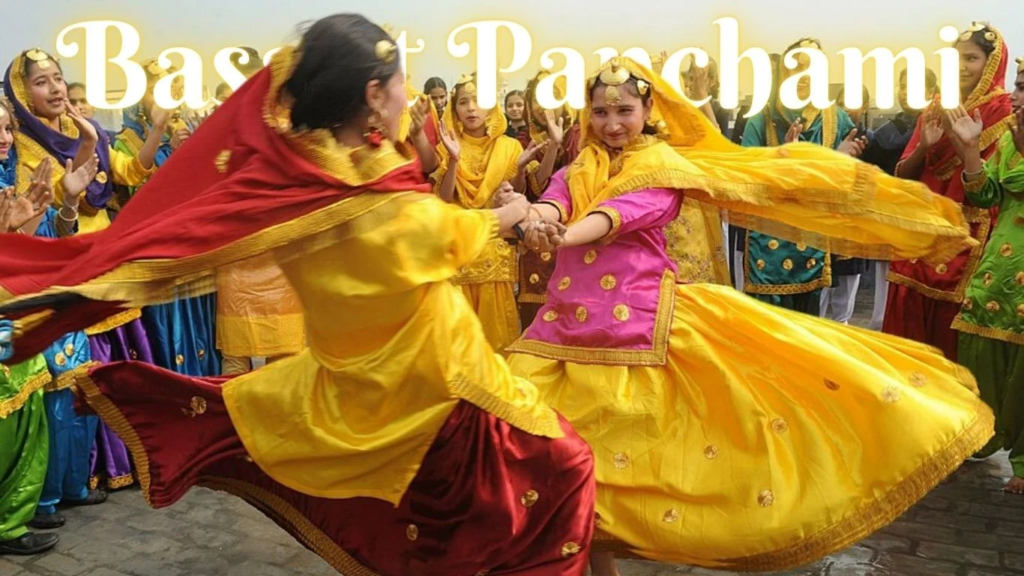
Table of Contents
- Introduction
- The Essence of Vasant Panchami
- The Spirit of the Basant Festival
- Regional Variations in Celebration
- India: The Devotional and Academic Festivity
- Pakistan: The Kite-Flying Extravaganza
- Nepal: A Blend of Worship and Culture
- Bangladesh: A Grand Tribute to Goddess Saraswati
- India: The Devotional and Academic Festivity
- Key Differences Between Vasant Panchami and Basant Festival
- The Common Threads of Celebration
- Conclusion: A Day of Joy and Cultural Harmony
Introduction
The arrival of spring is marked with vibrant festivities in South Asia. Two major celebrations—Vasant Panchami in India and Nepal, and Basant Festival in Pakistan and some parts of India—are deeply rooted in tradition and culture. Though both festivals share the theme of welcoming spring, their essence and manner of celebration differ significantly. Let’s explore these festivities and their unique regional flavors.
The Essence of Vasant Panchami
Vasant Panchami, also known as Saraswati Puja, is a Hindu festival dedicated to Goddess Saraswati, the deity of wisdom, learning, and arts. Celebrated on the fifth day of the Magha month (January-February), this day signifies the end of winter and the onset of spring. Devotees adorn themselves in yellow attire, which symbolizes prosperity, energy, and the blossoming mustard fields. Schools and temples organize Saraswati pujas, where students and scholars seek blessings for knowledge and creativity.
The Spirit of the Basant Festival
Basant Festival, also known as Basant Panchami in some regions, is more of a cultural and seasonal celebration rather than a religious one. It is famously associated with kite flying, music, dance, and outdoor festivities. This day is considered auspicious for celebrating nature’s renewal, with people wearing yellow outfits and rejoicing in the arrival of spring.
Regional Variations in Celebration
India: The Devotional and Academic Festivity
In India, Vasant Panchami is primarily celebrated in states like West Bengal, Bihar, Uttar Pradesh, and Rajasthan with grand Saraswati pujas in homes, schools, and temples. In Punjab, Haryana, and Delhi, kite flying is a part of the festivities, adding an element of joy and playfulness to the spiritual observance.
Pakistan: The Kite-Flying Extravaganza
Basant Festival is a grand celebration in Pakistan, particularly in Lahore, where skies are dotted with colorful kites. The festival, once banned due to safety concerns, is a cherished tradition marked by music, feasting, and joyous gatherings. It symbolizes unity and the spirit of celebration beyond religious boundaries.
Nepal: A Blend of Worship and Culture
In Nepal, Vasant Panchami holds religious significance, with devotees worshipping Goddess Saraswati in temples and educational institutions. The day is also marked as the beginning of formal education for young children, known as ‘Vidyarambha.’
Bangladesh: A Grand Tribute to Goddess Saraswati
Bangladesh celebrates Saraswati Puja with great enthusiasm, especially in Dhaka and other major cities. Universities and cultural organizations host grand processions, music performances, and artistic displays, making it a vibrant occasion.
Key Differences Between Vasant Panchami and Basant Festival
| Aspect | Vasant Panchami | Basant Festival |
| Origin | Religious (Hindu) | Seasonal/Cultural |
| Deity Associated | Goddess Saraswati | None specific |
| Main Activities | Puja, prayers, educational events | Kite flying, music, dance |
| Clothing Color | Yellow | Yellow |
| Regions Celebrating | India, Nepal, Bangladesh | Pakistan, parts of North India |
The Common Threads of Celebration
Despite their differences, both festivals symbolize new beginnings, prosperity, and the joy of nature. The color yellow dominates both celebrations, representing spring, energy, and vitality. The communal spirit of these festivals brings people together, transcending religious and national boundaries.
Conclusion: A Day of Joy and Cultural Harmony
Whether through devotion to Goddess Saraswati or the exhilarating sport of kite flying, Vasant Panchami and the Basant Festival share a common theme—celebrating life and the arrival of spring. These festivities highlight the rich cultural diversity of South Asia while reminding us of the shared joy that unites people across borders. No matter where or how it is celebrated, the essence remains the same: a tribute to knowledge, nature, and togetherness.

